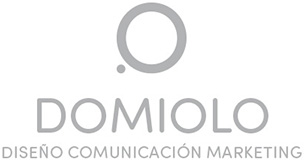DESIGN, WHAT IS?
By Nacho Lavernia and Manuel Lecuona. Source: Chapter 1 , ” The value of design “, 2008, ADCV (Designers Association of Valencia).
When we design for cultural, social or purely professional optics we can define many different and complex ways, depending on the interests of who defines and nuances that each optical imposed. But from a neutral point of view we could define it as the projective discipline whose aim is to define the formal and structural characteristics of an object that can be played by industrial means *. This definition does fall ethical or aesthetic notions. Likewise, the dictionary to define an activity very close to the design, such as architecture, says that it ” is the art of designing and constructing buildings ” without making any value judgments. Without distinguishing between good and bad architecture. Whether it is building the forefront as tacky hotel on the beach. Another thing is the interest that each of these buildings may have for who analyzes, or for society as a whole.
When someone is defining (through representation techniques, drawings, sketches, models…) and will be a manufactured or reproduced by means doing industrial design object. And so is the design of clothing or shoe like the car, washing machine or the poster. It has popularized the distinction between objects and objects with no “design”, but is unfounded. All are designed . Although many of them have originated without the required minimum design process. But one way or another someone has taken a series of decisions that have default as would be the result. It would, in these cases, an almost unconscious process design, but design after all. Thus seen, the problem lies in the rigor and capacity that focuses and develops the project. This, in theory, should give us a more relevant difference between well or poorly designed objects.
The spanish designer André Ricard in his “Talking of Design” distinguishes “between engineering, which deals with the relation of things with things, mechanisms each other, and the design, which takes care of the relationships of things with men and men with things.” Perhaps it may seem somewhat simplistic, but this finding emphasizes one of the main features of the activity designer, always willing to consider, from the beginning of the approach to any project, the end user as the main target of their work. All design methodologies, more or less explicit , are based on this principle. And perhaps it is this approach that forces the designer is a generalist professional, need to have knowledge in many areas, from the technical to the humanities, as we shall see when we discuss the design project.
* ( The book at the beginning of the first chapter itself clarifies that when the word object is used to refer not only own three-dimensional product of industrial design but also communication pieces such as books, posters, brochures, websites and corporate identities applications, ie all products including own graphic design ) .
